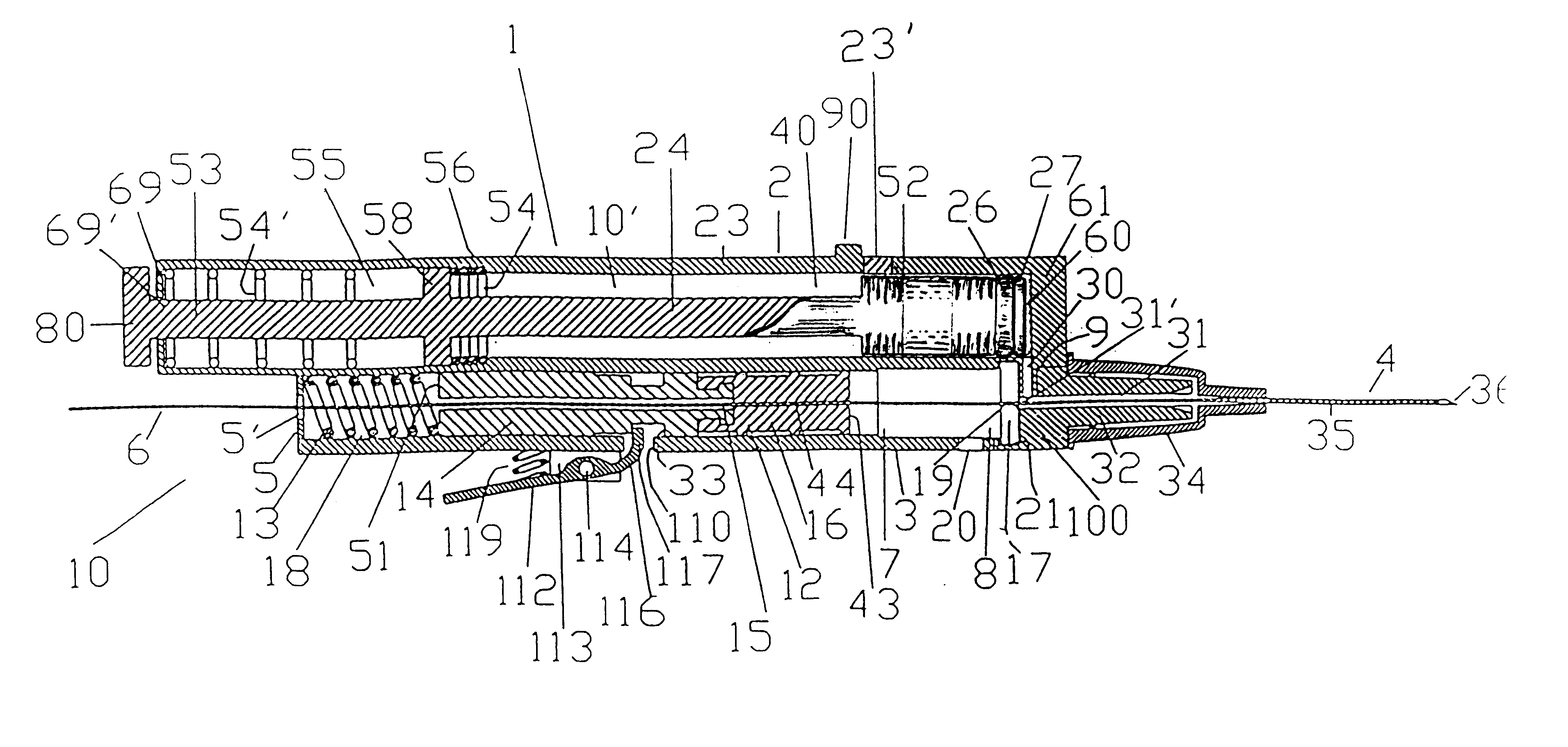Apparatus for blood vessel type differentiation for syringes and guidewires placement devices
a technology of blood vessel type and guidewire, which is applied in the field of apparatus for blood vessel type differentiation for syringes and guidewire placement devices, can solve the problems of significant morbidity, difficulty for operators to differentiate whether an artery or a vein, and no known method or apparatus gives the operator absolute certainty
- Summary
- Abstract
- Description
- Claims
- Application Information
AI Technical Summary
Benefits of technology
Problems solved by technology
Method used
Image
Examples
Embodiment Construction
FIG. 1 shows the automatic blood vessel type differentiator incorporated within a guidewire placement device. Guidewire placement devices have been described by Zadini et al in U.S. Pat. Nos. 5,415,177, 5,579780 and 5,749,371. These devices are capable of inserting medical guidewires into blood vessels upon and in response to blood vessel penetration by a needle tip. The blood vessel type differentiator is incorporated or added in the semiautomatic and manual version of the guidewire placement devices. The semiautomatic versions of the guidewire placement devices have been fully disclosed in U.S. Pat. No. 5,415,177 pages 12 FIGS. 18,18A, and U.S. Pat. No. 5,749,371, FIGS. 8,9,10,11, page 9 through 11. The manual versions of the guidewire placement device has been disclosed in U.S. Pat. No 5,579,780.
As shown in FIG. 1, the differentiator, generally indicated at 1, described below, is incorporated within a semiautomatic guidewire placement device. More precisely differentiator 1 is in...
PUM
 Login to View More
Login to View More Abstract
Description
Claims
Application Information
 Login to View More
Login to View More - R&D
- Intellectual Property
- Life Sciences
- Materials
- Tech Scout
- Unparalleled Data Quality
- Higher Quality Content
- 60% Fewer Hallucinations
Browse by: Latest US Patents, China's latest patents, Technical Efficacy Thesaurus, Application Domain, Technology Topic, Popular Technical Reports.
© 2025 PatSnap. All rights reserved.Legal|Privacy policy|Modern Slavery Act Transparency Statement|Sitemap|About US| Contact US: help@patsnap.com



